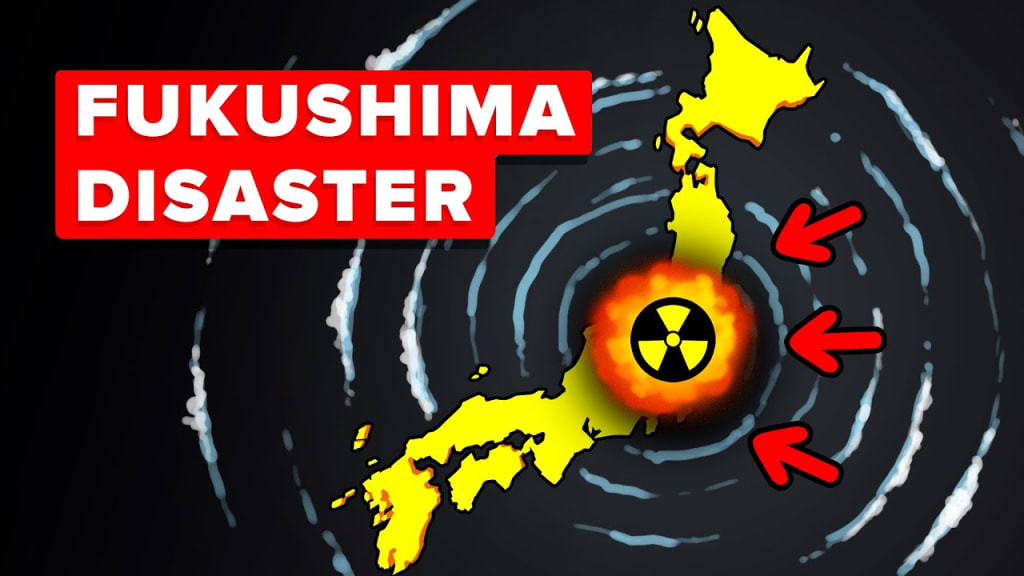
Fukushima Nuclear Disaster: Hour-by-Hour Breakdown of the 2011 Catastrophe
On March 11, 2011, an earthquake and tsunami triggered the Fukushima Daiichi nuclear disaster in Japan. This chronological account traces the catastrophe hour-by-hour, from the initial seismic shocks to the long struggle to regain control.
Undeniably one of the greatest tragedies ever recorded in human history, the souls of the faithful which departed was incomprehensible. May their souls find rest in the afterlife.

March 11, 2011: Earthquake and Tsunami Strike
At 2:46 PM on March 11, 2011, the largest earthquake in Japan's history, magnitude 9.0, shook the Tōhoku region off the eastern coast.
Within 30 minutes, tsunami waves up to 40 meters high slammed into Japan's eastern shores. The disaster ultimately claimed over 15,000 lives.
But the quake also imperiled the Fukushima Daiichi nuclear plant just 81 miles east of Sendai. Three of its six reactors were running when disaster struck.
Cooling Systems Fail, Radiation Leaks
The massive tsunami flooded and disabled Fukushima Daiichi's backup generators after the quake shut down the reactors.
Lacking power to pump coolant, temperatures and pressure rose in the active reactors, threatening meltdown. Hydrogen explosions rocked the plant over the coming days.
By March 12, technicians detected radioactive cesium and iodine from damaged fuel rods. Japan declared a nuclear emergency and evacuated residents near the stricken plant.

Explosions Expose Reactors to the Elements
On March 14, a hydrogen blast destroyed the roof and walls of reactor #3's containment building. Fuel storage concerns at reactor #4 led to a fire on March 15.
These explosions released significant radiation, eventually forcing the evacuation zone to extend 18 miles from Fukushima Daiichi. Some brave workers remained behind to battle meltdowns.
Repeated attempts to cool the overheating reactors with helicopter and truck-mounted water cannons failed to lower soaring radiation levels.
Contaminated Water Overwhelms the Plant
By March 25, freshwater cooling had reduced temperatures. But damaged systems leaked irradiated water, raising contamination so high that two workers suffered radiation burns.
With cooling pipes corroded by saltwater injections earlier, vast volumes of radioactive water accumulated in the plant, spilling into the sea and spreading fallout widely.
On April 2, a major leak was found emitting 1,000 millisieverts of radiation per hour - a potentially fatal dose. The surrounding land was irretrievably contaminated.

Stabilizing the Stricken Reactors
It took until July 2011 for Fukushima Daiichi to achieve safe "cold shutdown" conditions below 100°C in all reactors. But melted fuel continued to emit radiation within the crippled plant.
In November, Japan admitted it would take 30+ years to fully decommission and dismantle the reactors. Cleanup of radioactive fallout from the disaster would take decades more.
Still, zero deaths have been attributed to Fukushima's radiation vs. over 15,000 from the quake and tsunami themselves. Strict regulations enhance nuclear safety worldwide.

Conclusion: Hard Lessons From Fukushima
The Fukushima nuclear disaster resulted from natural hazards and human negligence. But it also revealed resilience as Japan rallied to contain the damage and loss of life.
Key lessons were learned about backup power, containment, fail-safes, and disaster response. Though challenges remain, Fukushima stands as both a tragedy and a warning for the future.
Robust regulation and safety protocols can prevent nuclear accidents. But events like Fukushima reveal that unserious attitudes to atomic power invite catastrophe. Complacency plants the seeds of disaster.
Humanity's ingenuity has unlocked the atom's power. Yet we remain humble before natural forces like earthquakes. Fukushima proved again that best-laid plans often go awry. Our task is to learn and do better - before the next crisis erupts.
📝 SOURCES
About the Creator
Reader insights
Outstanding
Excellent work. Looking forward to reading more!
Top insights
Easy to read and follow
Well-structured & engaging content
Expert insights and opinions
Arguments were carefully researched and presented
On-point and relevant
Writing reflected the title & theme






Comments
There are no comments for this story
Be the first to respond and start the conversation.